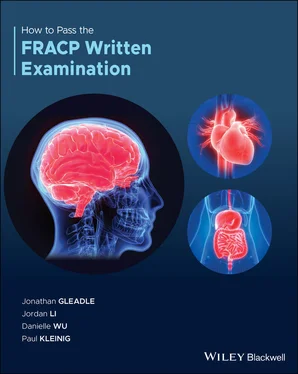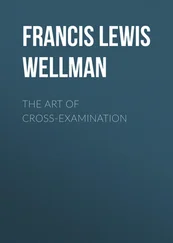
Iba T, Levy JH, Warkentin TE et.al. Diagnosis and management of sepsis‐induced coagulopathy and disseminated intravascular coagulation. J Thromb Haemost. 2019; 17(11): 1989–1994.
https://onlinelibrary.wiley.com/doi/10.1111/jth.14578
5. Answer: B
Septic shock is a type of distributive shock and is the most common cause of circulatory shock among patients in the ICU (62% of the patients). It is followed by cardiogenic (16%), hypovolemic (16%), and obstructive shock (2%). Causes of shock may be obvious from history, clinical examination, and/or investigations. Patients who present with a history of trauma/gastrointestinal bleeding may have hypovolaemic shock; patients with massive pneumothorax/pulmonary emboli/cardiac tamponade are likely to have obstructive shock; patients with fever, symptoms/signs of infection, an elevated WBC count, a high CRP, and an elevated procalcitonin level may have septic shock; patients present after a recent acute coronary syndrome are likely to have cardiogenic shock, etc. Some patients may have mixed types of circulatory shock.
Initial presentations may be similar in patients with different types of shock. Depending on the organ involvement after circulatory shock, the patient may have mental status changes, hypotension, tachycardia, tachypnoea, reduced urine output, coagulation abnormalities, etc. Blood lactate levels are elevated in patients with impaired tissue perfusion.
Further investigations by performing a septic screen, assessing cardiac output by echocardiogram, monitoring mixed venous oxygen saturation (SvO2), monitoring of central venous pressure, or performing a CTPA can help to differentiate the underlying cause(s) of circulatory shocks. If an echocardiogram shows large ventricles and poor contractility, cardiogenic shock is likely. An echocardiogram may help to rule out pericardial effusion, cardiac tamponade, etc. some of the common causes of obstructive shock.
After failing initial intravenous fluid resuscitation, it may be appropriate to provide vasopressor support, intensive blood pressure monitoring via an arterial line, and central venous catheters in the ICU if patients wish to have more intensive monitoring and treatment. Broad spectrum antibiotics administration according to the possible sites of infections should be considered as soon as possible without delay after a septic screen is performed if there is suspicion of septic shock, to minimise morbidity and mortality associated with sepsis.

Vincent J, De Backer D. Circulatory Shock. New England Journal of Medicine. 2013;369(18):1726–1734. https://www.nejm.org/doi/10.1056/NEJMra1208943
6. Answer: A
The ECGs show
1 Left bundle branch block (LBBB)
2 ST change associated with severe left ventricular hypertrophy (LVH)
3 ST changes associated ‘Tented’ T wave in patient with hyperkalaemia
4 Widespread concave (‘saddleback’) ST segment elevation in a patient with pericarditis
The key point is that not all ST elevation is due to ST elevation acute myocardial infarction (STEMI). ECG A is typical for LBBB which is new. New LBBB alone is not necessarily an indication for immediate cardiac catheterisation. However, the following criteria are the indications for immediate cardiac catheterisation:
Unstable patient with hypotension, acute pulmonary oedema or electrical instability
Sgarbossa Criteria (electrocardiographic findings used to identify myocardial infarction (MI) in the presence of a LBBB)Concordant ST‐segment elevation of 1 mm in at least 1 leadConcordant ST‐segment depression of at least 1 mm in leads V1 to V3
Smith‐Modified Sgarbossa criteria – any single lead with at least 1 mm of discordant ST elevation that is ≥25% of the preceding S‐wave.
In patients with old LBBB, ST–T abnormalities are common, making it difficult to assess the presence of AMI. ST segment and T–waves are usually discordant with the QRS in LBBB, since they are directed in opposite directions. A concordant ST segment shift should always be presumed to be a myocardial lesion and considered as strongly indicative of AMI. On the other hand, a discordant ST segment displacement may be indicative of a myocardial lesion when specific standard criteria are exceeded. For example, discordant elevation of the J point ≥0.5 mV in V1–V2 is strongly suggestive of AMI in the presence of LBBB. Moreover, in LBBB, the QRS/T ratio appears to be more predictive than the amplitude of ST elevation. When this ratio is near to or less than 1, the probability that the repolarisation abnormality is related to an MI is high.
ECG B is typical of LVH with associated concave ST elevation not STEMI. In LVH, the repolarisation pattern is usually discordant to the QRS as in LBBB, The elevation is more commonly observed in leads V2–V3 and is usually <0.3 mV with minor abnormalities in V4–V6. ECG shows high voltage of R waves in antero‐lateral leads associated to Q waves in anterior and inferior leads. The T waves, usually being very deep and inverted in V2–V4, may resemble a non‐Q AMI.
ECG C has ST changes associated ‘Tented’ T wave in a patient with hyperkalaemia. Significant variations of potassium levels have dramatic effects on electrical activities and cause arrhythmias. Hyperkalaemia induces an ST elevation in right precordial leads that can resemble an AMI. Other ECG changes in hyperkalaemia include reduction in the amplitude of P waves, prolongation of the PQ interval, enlargement of QRS complex and concave ST segment elevation.
ECG D shows widespread concave (‘saddleback’) ST segment elevation in a patient with pericarditis. Although pericardium is electrically inactive, its infection and/or inflammation as seen in this case of uraemic pericarditis may affect the external part of epicardium and cause concave ST elevation in almost all leads, as pericarditis generally affects the whole pericardium.

Smith S, Dodd K, Henry T, Dvorak D, Pearce L. Diagnosis of ST‐Elevation Myocardial Infarction in the Presence of Left Bundle Branch Block With the ST‐Elevation to S‐Wave Ratio in a Modified Sgarbossa Rule. Annals of Emergency Medicine. 2012;60(6):766–776. https://www.annemergmed.com/article/S0196‐0644(12)01368‐6/fulltext
7. Answer: D
Extracorporeal membrane oxygenation (ECMO) is an advanced form of temporary life support which helps to maintain respiratory and/or cardiac function. It diverts venous blood through an extracorporeal circuit and returns it to the body after gas exchange through a semi‐permeable membrane. ECMO can be used for oxygenation, carbon dioxide removal and haemodynamic support. Additional components allow thermoregulation and haemofiltration. The two most common forms of ECMO are: (i) veno‐arterial ECMO (VA‐ECMO) to support patients with a reversible cause of cardiogenic shock that is refractory to maximal therapy. VA‐ECMO can also be a salvage treatment option in the setting of cardiac arrest with unsuccessful advanced life support. (ii) veno‐venous ECMO (VV‐ECMO) is indicated for patients with a reversible cause of acute respiratory failure with refractory hypoxaemia or hypercapnia despite optimal ventilation. VV‐ECMO allows reduction in the ventilatory insult caused by mechanical ventilation.
Читать дальше















